Oncorhynchus tshawytscha
North Coast (Oregon Border to Point Arena)
North Central Coast (South of Point Arena to Half Moon Bay)
Farmed
Flakey fish
Oily fish
Wild caught
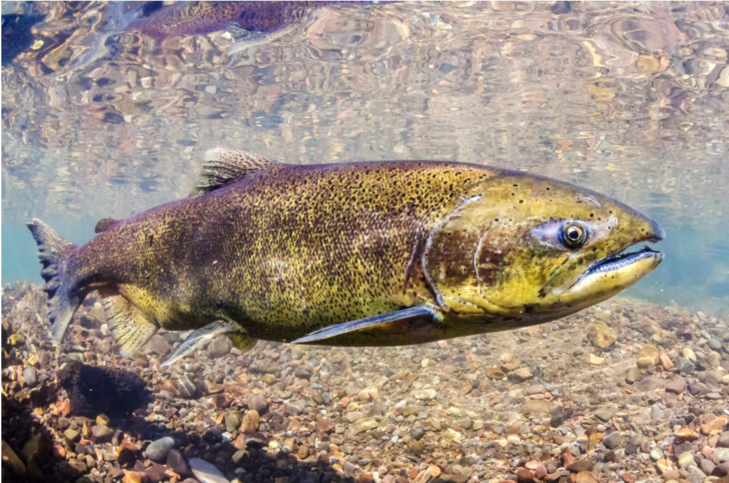
The Science
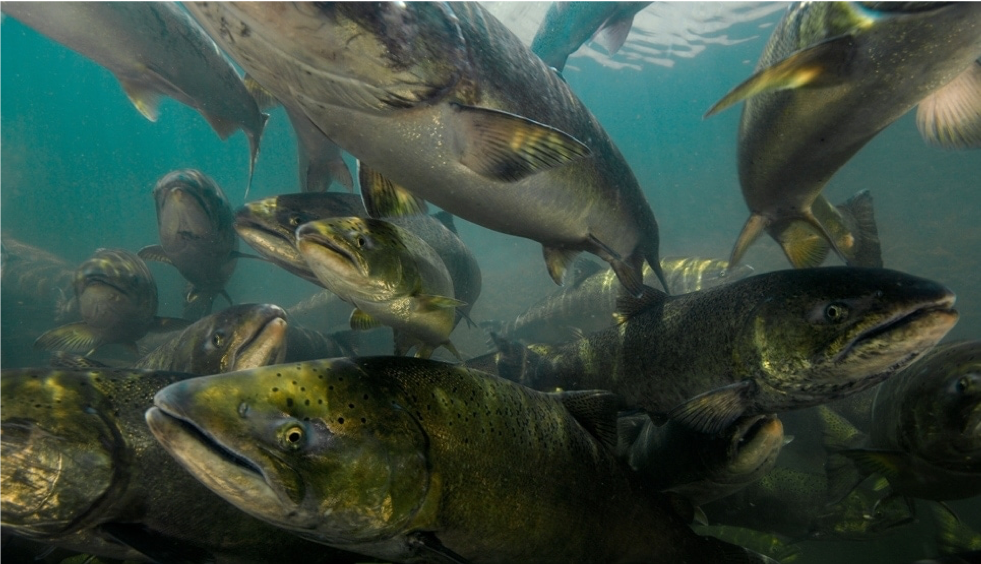
Taxonomic description
- Chinook salmon is a ray-finned fish, 60-91 cm (24-36 inches) long and 4.5-23 kg (10 to 50 lbs) on average, but can reach 147 cm (58 inches) and 59 kg (130 lbs). [8]
- The adult fish has a black gumline, and a blue-green body color on the back and top of the head. It has silvery sides, white belly and black spots on half of the body and both lobes of the tail fin. When about to spawn, it turns olive brown, red or purplish, especially if it is a male. [4]
- A juvenile fish will have parr marks on its sides, which are lost and adult colors develop before migrating to sea. [1,4]
Distribution
- This fish is found in North America and ranges from Chukchi Sea, Alaska to Monterey Bay, California. [4]
Life history
- This fish lives 7-9 years. Its life cycle starts upstream in freshwater when males deposit milt (sperm) to fertilize eggs which were laid in nests created by the females. [7]
- Eggs hatch usually in late winter or early spring and alevins (newly hatched fish) live in the gravel for several weeks until they have absorbed all the food in the attached yolk sac. [7]
- As fry, the juvenile chinook salmon emerges from the gravel by early spring. It remains in freshwater until the following spring when it is in their second year of life (smolt) and migrates to the ocean. [7]
- It becomes sexually mature during the 2-7 years in the ocean, then migrates back to the same freshwater stream or river where it was born to release eggs and milt. The fish dies right after reproducing, never returning to the ocean. [4]
Habitat
- Current and historic timber harvest, agriculture, urbanization and coastal modifications have impacted habitat. [4]
- Fish hatcheries increase risk of disease, competition, altered and/or reduced genetic diversity, and there are physical impacts from the hatchery operations themselves. [13]
- Eggs and fry live beneath the gravel in freshwater streams, juveniles live in the stream before migrating to estuaries, adults live in the colder upper reaches of the Pacific Ocean and only return to the natal freshwater stream to spawn and die. [4,7]
- The fry preys upon small plankton and later small insects, but preys upon other fish as adults, such as pilchard, sandlance, squid, herring and crustaceans. [4]
- Ocean acidification has the potential to dissolve the shells of important prey species. [6]
- Global warming will cause challenges in terms of warming of water, which will not only be detrimental to Chinook salmon health but also inviting of new competition/predators that otherwise wouldn’t be invited. A warming ocean will cause a northward shift of adult salmon and sea level rise will inundate low-lying estuaries, depleting a critical transition habitat. [6]
The Fishery
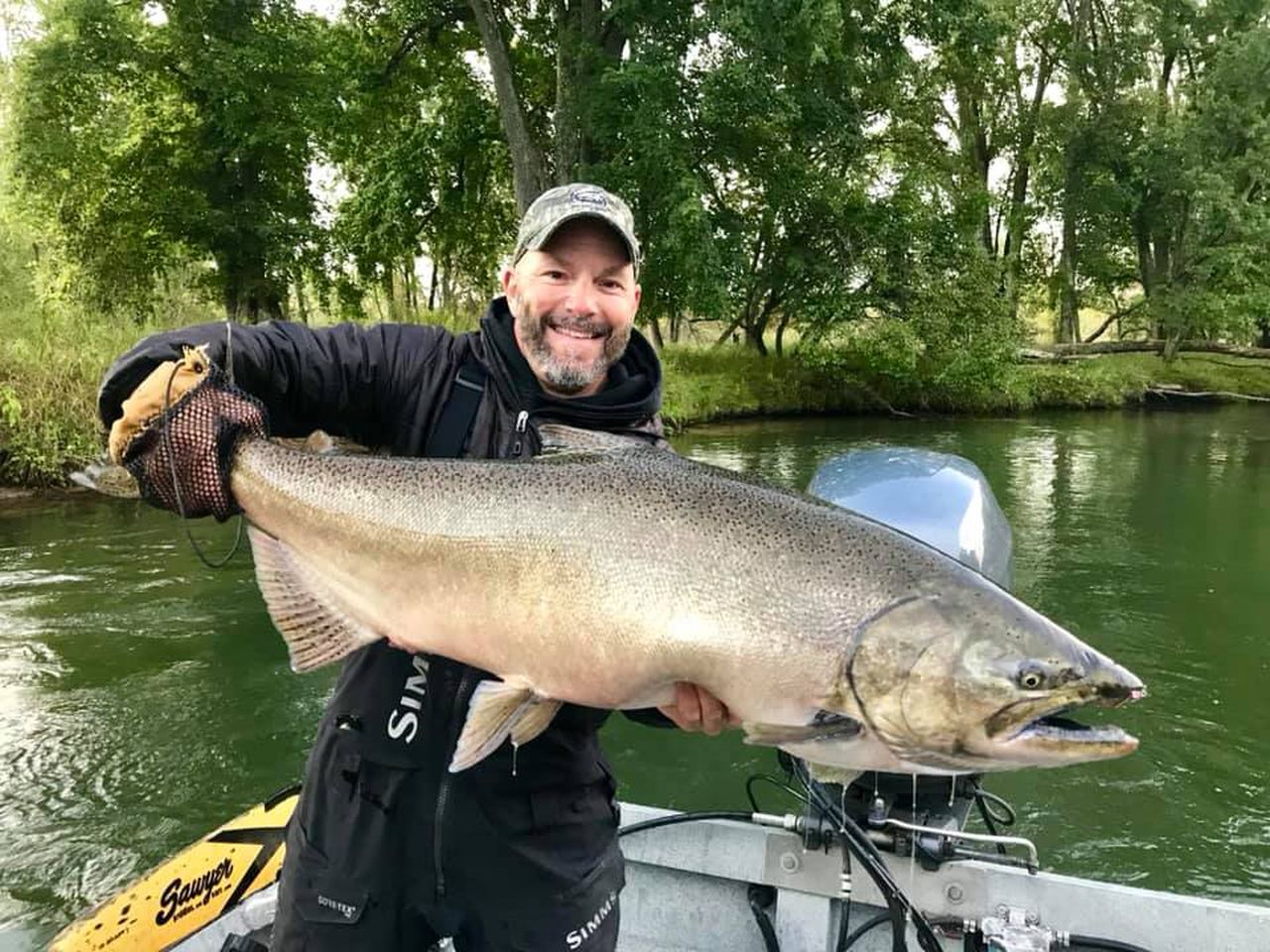
Seasonal availability
- Seasonal availability depends on location. Inland-run chinook has separate seasons for Upper Klamath, fall and spring Central Valley, and Sacramento winter-run salmon. [14]
- Fishery opening, closure, and re-opening is heavily regulated based on quotas, hatchery information, spawning assessments, and abundance assessments. [25]
- For ocean salmon fishing, separate seasons are listed from the Oregon-California Border to Humboldt south Jetty, the Humboldt South Jetty to Horse Mountain, Horse Mountain to Point Arena, Point Arena to Pigeon Point, and from Pigeon Point to the U.S.-Meico border. [24]
Regulatory and managing authority
-
As an anadromous fish that crosses international boundaries, this fish is managed internationally by the Pacific Salmon Commission and the Pacific Salmon Treaty. [25]
-
Within the United States, this fish is managed by NOAA fisheries and the Pacific Fisheries Management Council (PFMC), as established by the Magnuson-Stevens Act. [23, 25]In California, this fishery is regulated and managed by the Pacific Fishery Management Council, the California Fish and Game Commission, and the California Department of Fish and Wildlife. [26]The Pacific Coast Salmon Fishery Management Plan (Salmon FMP) guides this fishery along the Pacific states. This FMP includes rules for commercial and recreational catch, as well as information about regulations for Indigenous Peoples. [25]
Gear type
- Most chinook salmon are caught by trolling, but are also caught by commercial seine and gillnet fisheries as target species and as bycatch. [25]
Status of the fishery
- The status of stocks varies as some stocks are listed as threatened or endangered, and some have steady populations. [4]
- The California Department of Fish and Wildlife has the most accurate regional regulations on when and how to fish for Chinook. [14]
- During the fishing season, scientists monitor catch and escapement, comparing current returns with those from previous years, to keep an eye on abundance and actively manage the fishery. [4]
Potential ecosystem impacts
- Most fishing methods for chinook salmon do not contact the sea floor and has little impact. [4]
- Currently, the biggest challenge is to restore and maintain the habitats that chinook salmon need to survive. [4]
The Seafood
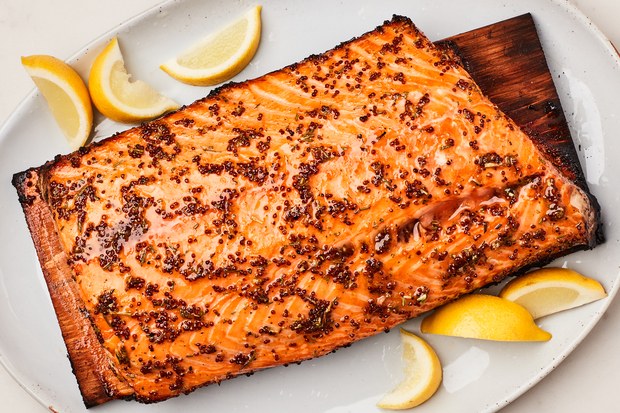
Edible portions
- Can be prepared as whole, dressed, fillets, and steaks. [15]
- The skin is edible. [16]
Description of meat
- As a migratory fish with a large fat reserve, this salmon a rich and buttery taste. [15]
- Texture described as oily, flakey, and meaty. [19]
- Compared to other wild Salmon species, Chinook salmon flesh is soft. [15]
- Meat is typically red, but some rare strains of this species have white meat. [15,19]
- Often considered to be the “best tasting” species of salmon. [16,18,19]
Culinary uses 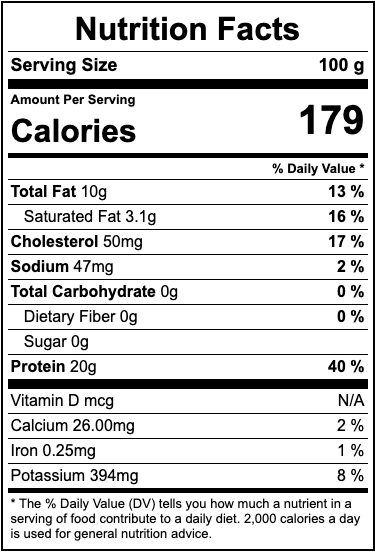
- Eaten and sold fresh, frozen, smoked, and canned. [15,17]
- Often baked, broiled, grilled, barbecued, poached, or smoked. [15,16]
- For a recipe for “Fabulous Grilled Salmon,” visit https://www.dentisland.com/cook-fabulous-chinook-salmon/. [18]
Nutritional information
- Table provides nutritional information for 100g of raw chinook salmon. [20]
- This fish is loaded with Omega-3 fatty acids, protein, niacin, selenium, and Vitamin B12. [16,19]
Toxicity report
- Because chinook salmon have large fat reserves, PCBs and persistent organic contaminants that accumulate in fish oils are more concentrated. [20]
Seasonal availability
- Availability of wild-caught chinook salmon depends on location. [14]
References
[1] ADFEG. Web. https://www.adfg.alaska.gov/static/education/wns/chinook_salmon.pdf. Accessed 2 Mar 2019.
[2] Columbia River Inter-Tribal Fish Commission. Web. https://www.critfc.org/salmon-culture/tribal-salmon-culture/. Accessed 24 Jan 2019.
[3] ITIS Report. Web. https://www.itis.gov/servlet/SingleRpt/SingleRpt?search_topic=TSN&search.... Accessed 24 Jan 2019.
[4] NOAA Fisheries. Web. https://www.fisheries.noaa.gov/species/chinook-salmon. Accessed 24 Jan 2019.
[5] Voices of the Bay. 2011. Fishery Basics-California Fisheries. Web. https://nmssanctuaries.blob.core.windows.net/sanctuaries-prod/media/arch.... Accessed 29 June 2020.
[6] The National Wildlife Federation. Chinook Salmon. Web. https://www.nwf.org/Educational-Resources/Wildlife-Guide/Fish/Chinook-Sa.... Accessed 13 Mar 2019.
[7] Olympic National Park Washington. The Salmon Life Cycle. Web. https://www.nps.gov/olym/learn/nature/the-salmon-life-cycle.htm. Accessed 28 Jan 2019.
[8] Wikipedia. 2020. Chinook Salmon. Web. https://en.wikipedia.org/wiki/Chinook_salmon#Natural_range. Accessed 11 Feb 2020.
[9] ANIMAL LIFE EXPECTANCY. Chinook Salmon. Web. https://www.worldlifeexpectancy.com/fish-life-expectancy-chinook-salmon. Accessed 28 Jan 2019.
[10] Santella, Chris.Travel Oregon. 2017. Meet the Chinook Salmon. Web. https://traveloregon.com/plan-your-trip/destinations/lakes-reservoirs/me.... Accessed: 28 Jan 2019.
[11] Ma, Michelle. University of Washington. 2018. Largest Chinook Salmon Disappearing from West Coast. Web. https://www.washington.edu/news/2018/02/27/largest-chinook-salmon-disapp... 28 Jan 2019.
[12] Ruggerone, G. T., Nielsen, J. L., & Agler, B. A. (2009). Linking marine and freshwater growth in western Alaska Chinook salmon Oncorhynchus tshawytscha. Journal of Fish Biology, 75(6), 1287-1301.
[13] G. V., Ashbrook, C., Yi, K., & Dixon, J. (2004). Survival of spring chinook salmon captured and released in a selective commercial fishery using gill nets and tangle nets. Fisheries Research,68(1-3), 123-133. doi:10.1016/j.fishres.2004.02.003
[14] California Department of Fish and Wildlife. 2020. Chinook Salmon. Web. https://wildlife.ca.gov/Conservation/Fishes/Chinook-Salmon#:~:text=Fall%.... Accessed 29 June 2020.
[15] SeafoodSource. 2014. Salmon, Chinook. Web. https://www.seafoodsource.com/seafood-handbook/finfish/salmon-chinook. Accessed 21 Jan 2019.
[16] Shaw, Hank. 2019. How to Cook King or Chinook Salmon. Web. https://www.thespruceeats.com/king-or-chinook-salmon-1300662. Accessed 21 Jan 2019
[17] Delaware Sea Grant. 2018. Seafood Health Facts: Making Smart Choices. Web. https://www.seafoodhealthfacts.org/seafood-choices/description-top-comme.... Accessed: 22 Jan 2019.
[18] DentIsland. 2015. Cook Fabulous Chinook Salmon. Web. https://www.dentisland.com/cook-fabulous-chinook-salmon/. Accessed: 22 Jan 2019.
[19] NOAA. 2018. Chinook Salmon. Web. https://www.fishwatch.gov/profiles/chinook-salmon. Accessed 22 Jan 2019.
[20] Nutrition Value. 2020. Nutrition facts for Fish, raw, chinook, salmon. Web. https://www.nutritionvalue.org/Fish%2C_raw%2C_chinook%2C_salmon_nutritio.... Accessed 11 Feb 2020.
[21] Lofton, Justine. Michigan Live. 2019. ‘Absolute giant’ chinook salmon caught in northern Michigan earns DNR award. Web. https://www.mlive.com/news/2019/09/absolute-giant-chinook-salmon-caught-.... Accessed 11 Feb 2020.
[22] Jones, Bill. Epicurious. 2009. Cedar-Plank Salmon. Web. https://www.epicurious.com/recipes/food/views/cedar-plank-salmon-354516. Accessed 11 Feb 2020.
[23] Seafood Watch. 2020. Pacific Salmon. Web. https://www.seafoodwatch.org/-/m/sfw/pdf/reports/s/mba_seafoodwatch_salm.... Accessed 17 July 2020.
[24] O'Farrell et al. 2020. Review of 2019 Ocean Salmon Fisheries. Pacific Fishery Management Council. Web. https://www.pcouncil.org/documents/2020/02/review-of-2019-ocean-salmon-f.... Accessed 17 July 2020.
[25] NOAA Fisheries. 2020. Chinook Salmon. Fishwatch. Web. https://www.fishwatch.gov/profiles/chinook-salmon?_ga=2.93091229.1812683.... Accessed 17 July 2020.
[26] New and Proposed Regulations-2019. 2019. California Fish and Game Commission. Web. https://fgc.ca.gov/Regulations/2019-New-and-Proposed#180_6. Accessed 24 August 2020.
